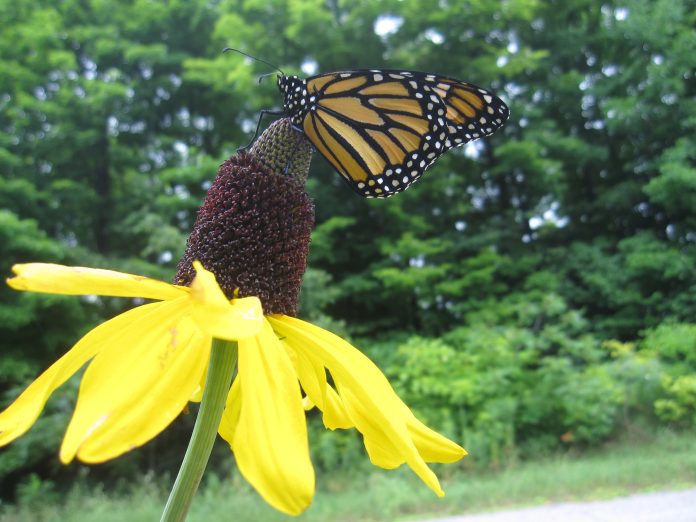
Why do we love gardening so much? Not just us, but Canadians in general. Perhaps it is the company we keep while in the garden that makes the idea so attractive.
Take butterflies and hummingbirds for instance. This time of year, they are everywhere: are they in your garden? Chances are they are in the neighbourhood. But they need an invite to be a part of your garden. They are welcome guests, as they are primary pollinators and one third of the food we eat is made possible by their work.
Here is a list of our seven favourite butterfly and hummingbird plants that can be planted now, many of them will bloom this season:
Butterfly weed (Asclepias tuberosa). Ignore the “weed” part of the common name of this plant. Butterfly weed is a desirable addition to any sunny garden. Broad, fragrant blooms in late summer attract butterflies in a big way. Most cultivars mature to about 80 cm tall and equally wide, though some are smaller.
Milkweed (Asclepias). Another weed, that is not, though it once was. The definition of a weed that we like is, “A plant whose virtues that have not yet been discovered”. Milkweed is a native pollinating plant that not only attracts the Monarch butterfly, but it is the only source of sustenance for their larvae (caterpillars). The world needs more monarch butterflies. Sow milkweed from seed most any time, in an open, sunny position. Grows to 120 cm and produces a fragrant, umbel of flowers this time of year.
Yarrow (Achillea millefolium). The perfect flowering perennial tolerates long periods of drought, is self propagating, flowers for weeks at a time mid to late summer, produces bright, primary-coloured blooms, cuts nicely for use indoors and attracts butterflies. What is not to like? Grows to about 40 cm. Insists on bright sunshine.
Sedum. The ever-popular sedum spectabile is indestructible, grows in a wide variety of soil types, flowers from late summer through fall, sometimes for up to 10 weeks and butterflies love it. Grows to 30 cm. Sun. Other, lower growing varieties are great for bordering a sunny garden or planting on a rooftop. Sun.
Trumpet Vine (Campsis radicans). A hummingbird magnet. Large orange, trumpet shaped flowers featured on a twining vine that does not stop. We recommend heavy annual pruning to keep it under control. Most brightly coloured, trumpet shaped flowers attract hummingbirds, with their long bill and a tongue that moves almost as fast as their wings, any plant with trumpet shaped flowers that are nectar rich will attract them. We recommend old fashioned nicotine, lupines, and foxglove.
Cardinal Flower. Perennial Salvia. All salvia is nectar rich and generally they fall into the “hot colours” category, which is good. Perennial salvia is amazing at attracting hummingbirds. Cardinal flower blooms for several weeks late in summer too. 60 cm. Sun.
Shasta Daisies (Leucanthemum × superbum), Rudbeckia (Rudbeckia fulgida), and Coneflower (Echinacea). We classify these flowering perennials together on purpose as each of them features a flat landing surface, perfect for butterfly landing and each produce lots of pollen or nectar or both. For a succession of bloom from one end of the season to the other we recommend:
Shasta Daisies for late spring, early summer, flowering up to 4 weeks.
Coneflower for early to mid summer, flowering up to 6 weeks.
Rudbeckia for late summer, early fall, flowering up to 10 weeks.
Plant all 3 of these species and you will enjoy a nonstop show. And your butterflies will too!
Note that the mature flowers of Coneflower and Rudbeckia produce seed heads that attract singing finches by the dozen. A sound you will learn to associate with autumn as your finch population grows.
Mark Cullen is an expert gardener, author, broadcaster, tree advocate and Member of the Order of Canada. His son Ben is a fourth-generation urban gardener and graduate of University of Guelph and Dalhousie University in Halifax. Follow them at markcullen.com, @markcullengardening, and on Facebook.

